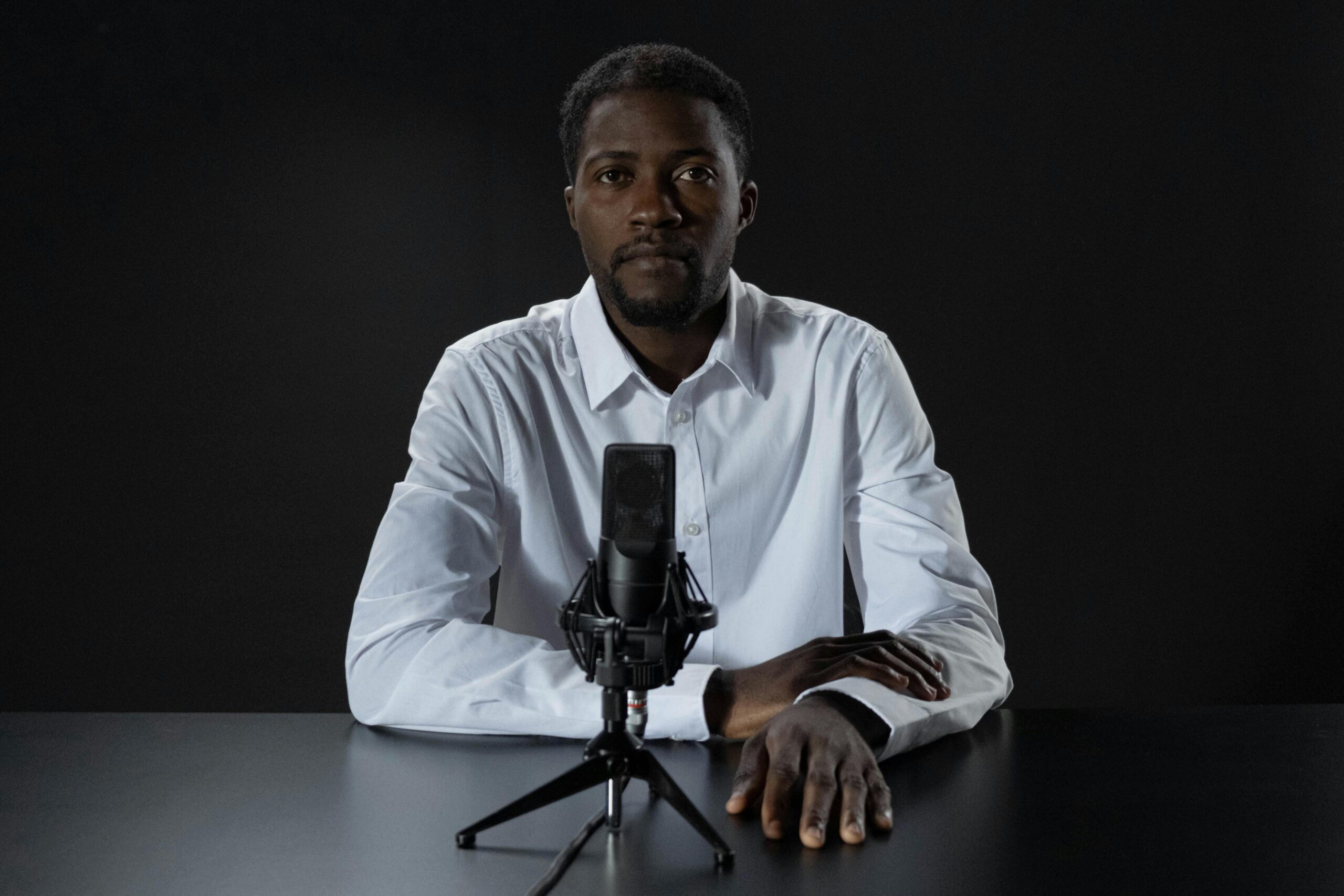Have you ever found yourself rambling to friends about your niche hobby—like competitive mushroom foraging, retro video game modding, or underwater basket weaving—only to realize their eyes have glazed over?
You’re not alone.
The truth is, your passion matters, and there’s an audience out there craving content about your unique interests. Podcasting is the perfect medium to connect with fellow enthusiasts, build a community, and even turn your hobby into something more. But where do you start? How do you stand out in a sea of podcasts? And how do you grow a loyal following that hangs on your every word?
In this guide, we’ll walk through every step of launching a podcast for your niche hobby, from brainstorming ideas to monetizing your show. No tech jargon, no fluff—just actionable advice, relatable stories, and insider tips to help you avoid rookie mistakes. Let’s turn your hobby into a microphone-worthy adventure.
Part 1: Falling in Love with Your Niche (Yes, Even If It’s Quirky)

1.1 Why Your Niche Hobby Is a Podcast Goldmine
Most people think podcasts need broad appeal to succeed. Wrong. The more specific your niche, the better. Why?
- Less Competition: While everyone else fights over “self-help” or “true crime,” your show about vintage typewriter restoration or competitive LEGO building has a dedicated, underserved audience.
- Hyper-Targeted Audience: Listeners in niche communities are ravenous for content. They’ll binge your episodes, share them with friends, and become your biggest advocates.
- Passion = Authenticity: When you geek out about something you love, your enthusiasm is contagious. That authenticity builds trust and loyalty faster than any algorithm hack.
Real-World Example: Take “The Yarniacs”, a podcast about knitting. Sounds simple, right? But by focusing on deep dives into knitting techniques and fostering a supportive community, they’ve built a 5,000+ member Facebook group and attracted sponsors like yarn brands.
1.2 How to Validate Your Podcast Idea
Before you buy a microphone, ask yourself:
- Is there demand?
- Search Reddit, Facebook Groups, or forums like Quora. Are people asking questions about your hobby?
- Use Google Trends or Keyword Planner to check search volume for related terms.
- Who’s your “avatar listener”?
- Create a persona: Meet “Clara,” a 32-year-old urban gardener who spends weekends composting and wants to learn vertical farming hacks. Tailor your content to her needs.
- Can you add a unique angle?
- Example: Instead of “Photography Podcast,” try “Film Photography for Gen Z: Shooting Like It’s 1999.”
Pro Tip: Record a 5-minute “trailer” explaining your podcast concept. Share it with hobby communities for feedback.
Part 2: Gear Up Without Breaking the Bank

2.1 The Budget-Friendly Starter Kit
You don’t need a studio to sound professional. Here’s what you actually need:
- Microphone: Start with a USB mic like the Blue Yeti Nano (99)or∗∗FifineK669B∗∗(99)or∗∗FifineK669B∗∗(35).
- Headphones: Any closed-back headphones (even old earbuds) work for editing.
- Recording Software: Audacity (free) or GarageBand (free for Mac users).
- Quiet Space: Closets filled with clothes make great DIY sound booths!
Confession: My first 10 episodes were recorded under a blanket fort. No shame.
2.2 Editing on a Shoestring
Editing is where magic happens. Keep it simple:
- Trim dead air and “ums” using Audacity.
- Use Canva to design podcast cover art (template size: 3000×3000 pixels).
- Descript offers free tier editing with AI-powered tools to clean up audio.
Storytime: I once accidentally left in a 30-second clip of my dog barking. Listeners thought it was hilarious—and it became a running gag. Embrace imperfections!
Part 3: Crafting Content That Hooks Listeners

3.1 Episode Formats That Work
Mix formats to keep things fresh:
- Solo Shows: Share tutorials, personal stories, or industry rants.
- Interviews: Invite experts or hobbyists with unique perspectives.
- Q&A Episodes: Answer listener-submitted questions.
- Roundtable Discussions: Host a debate about the best glue for model airplanes.
Case Study: “The Dice Tower” (board game podcast) uses a mix of reviews, interviews, and Top 10 lists to keep listeners engaged for 15+ years.
3.2 Scripting vs. Wingin’ It
- Scripted: Great for tutorials or tight narratives. Use bullet points to sound natural.
- Unscripted: Ideal for conversational shows. Prep 3-5 talking points to stay on track.
Golden Rule: Always rehearse your intro/outro. A strong opener (“Welcome to Bonsai Bosses—where tiny trees meet big dreams!”) sets the tone.
Part 4: Growing Your Tribe (Without Selling Your Soul)

4.1 The Art of Shameless Self-Promotion
- Leverage Existing Communities: Share episodes in Facebook Groups or subreddits—but follow group rules!
- Collaborate: Guest on other podcasts or invite influencers for interviews.
- Repurpose Content: Turn episodes into YouTube shorts, blog posts, or Instagram carousels.
Hack: Create a “5 Best Tips” PDF related to your hobby. Offer it as a freebie in exchange for email sign-ups.
4.2 SEO for Podcasters
Optimize for search engines and podcast directories:
- Episode Titles: Include keywords like “Beginner’s Guide to [Hobby]” or “How to [Specific Task].”
- Show Notes: Write 200-300 word summaries with timestamps and links.
- Transcribe Episodes: Use Otter.ai to create text versions for SEO juice.
Pro Move: Submit your podcast to niche directories like Listen Notes or Podchaser.
Part 5: Turning Passion into Profit

5.1 Monetization Strategies That Don’t Suck
- Sponsorships: Pitch to small businesses in your niche (e.g., a pottery podcast could partner with clay suppliers).
- Affiliate Marketing: Promote products you already use (Amazon Associates, Etsy affiliates).
- Premium Content: Offer ad-free episodes, bonus Q&As, or tutorials on Patreon.
Success Story: “The Minimalists Podcast” built a $500k/year business by aligning sponsors with their audience’s values.
5.2 Building a Legacy
Your podcast isn’t just a show—it’s a legacy. Celebrate milestones (100th episode!), host live events, or create merch that reflects your community’s inside jokes.
Final Thoughts: Your Microphone Is Waiting
Starting a podcast for your niche hobby isn’t about fame or fortune. It’s about finding your people—the ones who light up when you mention 18th-century quilt patterns or fermentation experiments.
It won’t always be easy. You’ll have episodes with single-digit downloads, tech meltdowns, and moments of self-doubt. But every time a listener emails you saying, “Your podcast made me feel less alone,” it’ll be worth it.
So grab that microphone, hit record, and let your geek flag fly. The world needs your voice.





